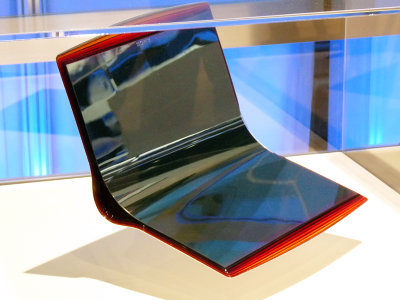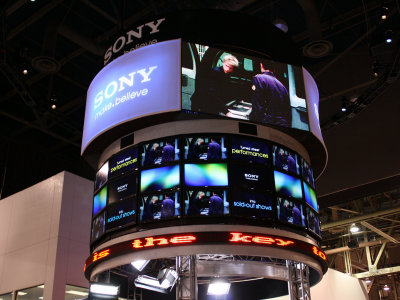What exactly is the mechanism behind electronic paper, which can display text and images even when the power is turned off?

Electronic paper, which is used in e-book readers, has features such as a 'paper-like texture' and 'display that does not disappear even when the power is turned off,' and works in a different way from LCD displays and OLED displays. Here is a summary of how electronic paper works.
Electronic Paper Basics
https://www.jstage.jst.go.jp/article/itej/67/10/67_881/_article/-char/ja
How does e-paper display work? - 'Paper of the future' that is kind to the eyes and the environment is now in practical use! - | Techno Trivia | TDK Techno Magazine
https://www.tdk.com/en/tech-mag/knowledge/117
Electronic Ink|E Ink Technology
https://www.eink.com/tech/detail/How_it_works
Wenting Zhang / Glider · GitLab
https://gitlab.com/zephray/glider
LCD displays and OLED displays emit light themselves and deliver it to the eyes. On the other hand, e-paper does not emit light itself, but reflects external light to deliver the displayed content to the eyes. This allows e-paper to have a texture similar to that of paper without glare. E-paper also has the advantage that the content can be rewritten any number of times by applying voltage, and the displayed content is retained even when the power is turned off. Due to these features, e-paper is used in e-book readers and price display boards in retail stores.

The first electronic paper is said to be 'Gyricon,' developed by Xerox in the United States in the 1970s. Gyricon was a large number of 'tiny spheres painted half white and half black,' and displayed a black and white screen by rotating the spheres with a changing electric field.
At the time of writing, the mainstream method is the 'electrophoresis method,' in which 'white and black particles with different charges are enclosed in a tiny capsule, and the white or black particles are moved to the surface side by changing the electric field. The idea of 'moving tiny particles by electrophoresis' itself was patented by Isao Ohta of Matsushita Electric Industrial (now Panasonic) in the 1960s, but the issues related to particle aggregation and precipitation and the improvement of productivity were greatly contributed to by patents filed in Japan in 1987 and research results from the Massachusetts Institute of Technology.

By adding a color filter to the surface of the black and white e-paper, color display is also possible.

In addition, a method has been developed that makes it possible to reproduce a very large number of colors by encapsulating 'white particles and the three primary color particles of yellow, red, and blue' in extremely small capsules.

For example, the color e-book readers 'Kobo Libra Color' and 'Kobo Clara Color' released in May 2024 use the RGB color filter-equipped electronic paper ' E Ink Kaleido 3 ', which can display 4096 colors. You can check the appearance of color display on both models in the article below.
A review of Rakuten Kobo's first ever color e-paper reader 'Kobo Libra Colour' and 'Kobo Clara Colour' - GIGAZINE

In addition, electronic paper has a weakness in that it takes time to switch displays, but in recent years, electronic paper capable of high-speed display switching has been developed, and electronic paper with a refresh rate comparable to that of 60Hz liquid crystal displays has also appeared . In the following movie, you can see how to browse and watch videos using 60Hz electronic paper.
Modos Paper Monitor Status Update - YouTube
◆ Forum is currently open
A forum related to this article has been set up on the official GIGAZINE Discord server . Anyone can post freely, so please feel free to comment! If you do not have a Discord account, please refer to the account creation procedure article to create an account!
• Discord | 'Do you own any devices with electronic paper? How does it feel to use?' | GIGAZINE
https://discord.com/channels/1037961069903216680/1243489406061641762
Related Posts:
in Hardware, Posted by log1o_hf







